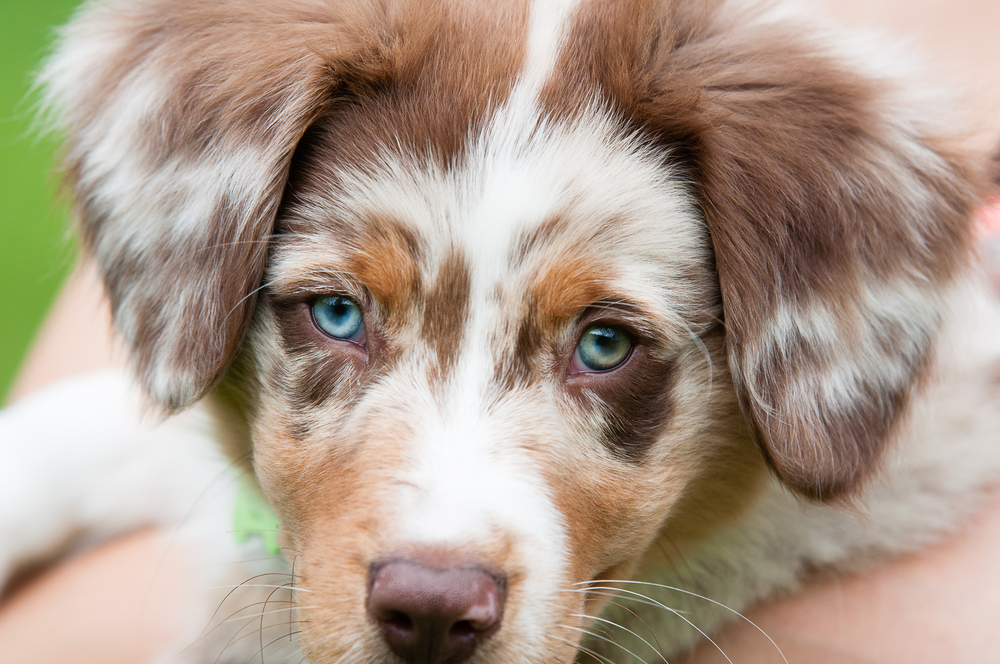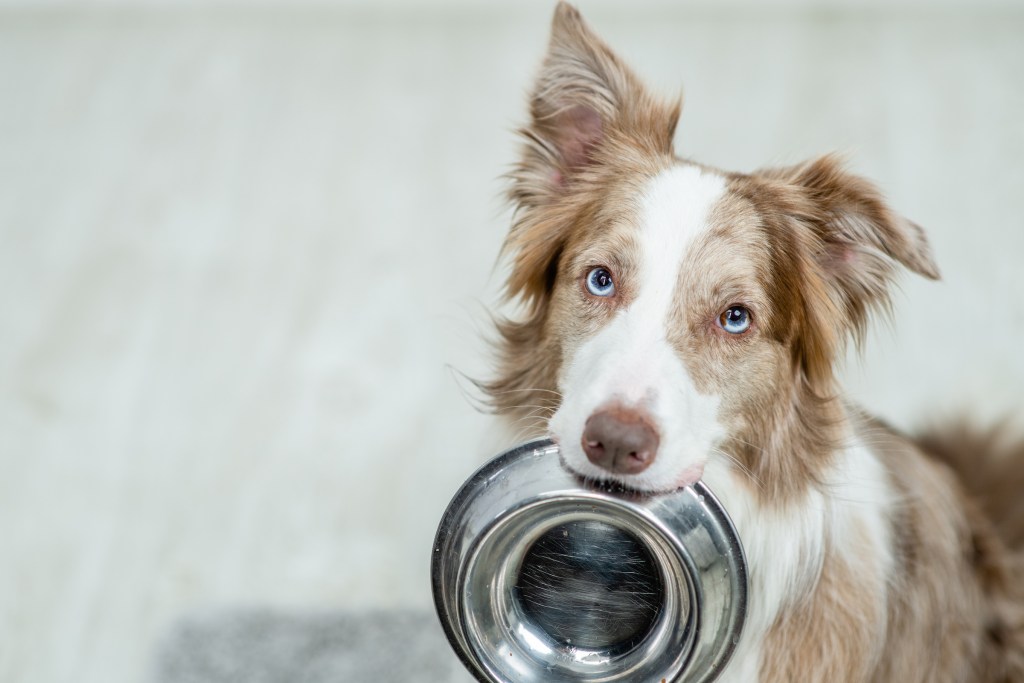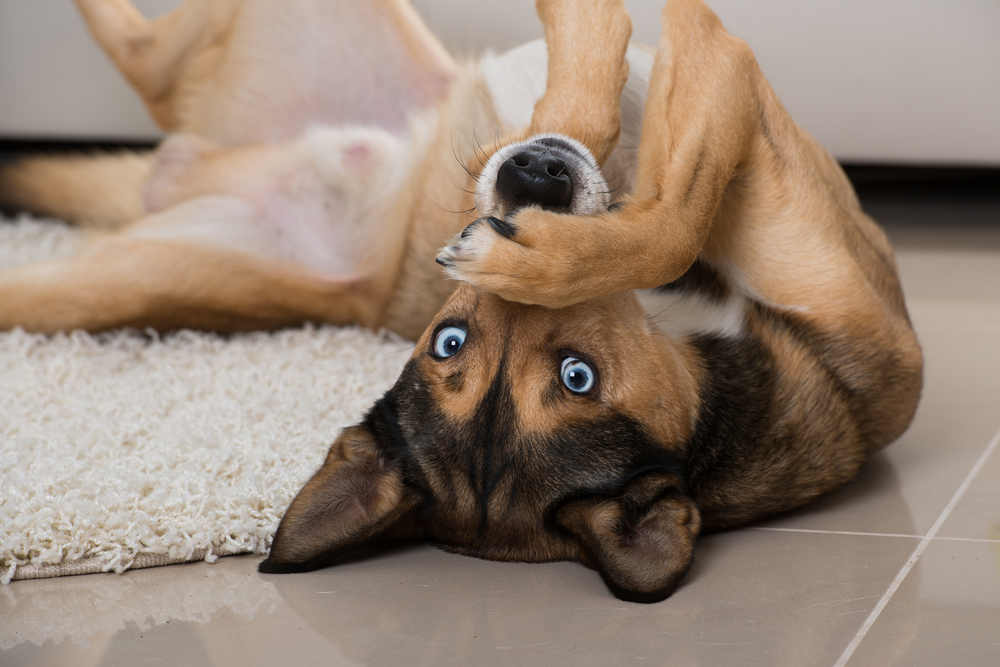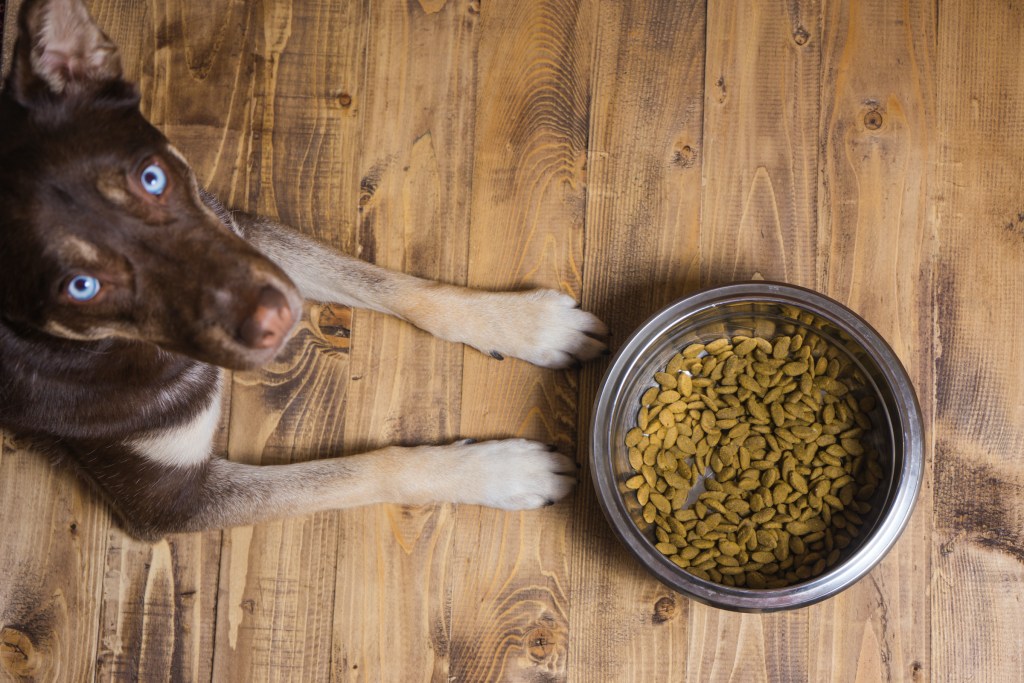
Blue-eyed dogs are striking, mostly because they are such an unusual sight. After all, even though all puppies are born with blue eyes, 95% of them will change color within the first eight to 10 weeks of life. And while there’s almost nothing sweeter than staring into the brown eyes of an adoring pet, those dog breeds with blue eyes are, well, a sight to behold.
If you’re lucky enough to own a dog with blue eyes, congratulations. If, like the rest of us, you’re just curious about what causes that beautiful abnormality, read on. We’ll share which dog breeds naturally have blue eyes, why that occurs, and if blue-eyed dogs are at risk for health problems as a result.

What dog breeds have blue eyes?
No doubt about it, dogs with blue eyes belong to a unique club. Scientists say only 5% of dogs have the blue-eye variant as part of their DNA. The blue-eyed trait is recessive and most often related to coat color, specifically in those with merle (mottled patches of color) or piebald (white coat with spots of color).
Dog breeds that naturally have blue eyes include:
- Siberian husky
- Border collie
- Australian shepherd
- Dachshund
- Weimaraner
- Cardigan Welsh corgi
- Great Dane
- Catahoula leopard dog
- Alaskan Klee Kai
- Pit bull
Ironically, blue eyes don’t actually have any blue pigment. In fact, blue eyes indicate a lack of pigment. Additionally, if the fur around your dog’s eyes is white, their chances of having blue eyes (along with a pink nose and skin) increase.

Why do some dogs have blue eyes?
It’s all about the melanin, or the pigment in the iris, that makes up the colored part of the eye. Brown eyes, which are the most common color, have brown pigment in both the front and back layers of the iris. Blue eyes have a small amount of melanin (or none at all) in the front layer and a small amount in the back. The dog’s DNA is the key to how much melanin is produced.
Scientists are still studying the phenomenon. While previous studies indicate that genes that determine coat color play a major role in determining a dog’s eye color, a study from 2018 discovered that another gene important in eye development might also play a role.

Do dogs with blue eyes have health problems?
Pigment isn’t just about color; it’s also a critical element in the development of sight and hearing in our canine friends. And while not all blue-eyed dogs will have problems with their sight or hearing, some are at greater risk for certain conditions.
Cochleosaccular deafness is a hereditary condition linked to the pigment in a dog’s coat and eyes. It’s more prevalent in white dogs with blue eyes, and it usually appears within 1 to 3 weeks of age in one or both ears.
Merle ocular dysgenesis occurs when two merle-coated dogs have puppies. Common vision problems for the offspring include smaller eyes, off-center pupils, light sensitivity, general impaired vision, and a greater risk of developing cataracts.
Albinism occurs when a dog can’t produce sufficient melanin and is completely devoid of color. This rare condition can cause smaller eyes, eyes sensitive to light, and deformities in the lens or iris that can cause poor vision or complete blindness.
If your brown-eyed adult dog’s eyes change color, it may be a signal of eye disease or the aging process:
- Interstitial keratitis: An inflammation of the cornea that can display as a bluish-white film over the eye.
- Cataracts: Often a sign of aging, cast a cloudy and often bluish look to the eye.
- Glaucoma: A disease of the optic nerve, can also give a bluish tint to the eye.
Any change in your dog’s vision should be reported to your veterinarian immediately. Most eye diseases can be treated — with a better prognosis occurring in those that are detected early.
So, as you can see, there’s more to a blue-eyed dog than (has to be said) meets the eye. Regardless of their color, the expression in your dog’s eyes is a great way to know what they’re thinking. Round eyes that show a lot of white indicate your pup is tense. Dilated pupils may be a sign of fear — or excitement. And when your dog is relaxed, they may even look like they’re squinting.

Are all blue-eyed dogs prone to deafness?
While blue-eyed dogs have an increased risk of cochleosaccular deafness, researchers from Louisiana State University concluded this: “Blue eyes, resulting from an absence of pigment in the iris, is common with pigment-associated deafness, but is not, in and of itself, an indication of deafness or the presence of the deafness gene…” That being said, certain breeds, such as Dalmatians, bull terriers, English setters, and English cocker spaniels who have blue eyes are more likely to be deaf. Some researchers suspect an autosomal dominant defect known as incomplete penetrance, but there’s currently no literature to support the theory.
Here’s another fun fact about dog eyes you might like to know. Making eye contact with your dog, even for a few minutes, triggers the release of oxytocin, a hormone associated with empathy, trust, and relationship building. A 2015 study by researchers at Azabu University in Sagamihara, Japan, suggests that dogs experience a 130% increase in oxytocin after making eye contact with their owners, while their owners experience 300%. What does that mean? Brown, blue, gray, or green, looking into a dog’s eyes is a mutually beneficial way to strengthen the bond between you and your best friend.
Editors' Recommendations
- Are ‘dog years’ really 7 human years? How to calculate your dog’s age
- How to tell if your older dog’s health decline means the end is near
- Is your dog barking nonstop? Here’s how to get your noisy pup under control
- When can kittens leave their mom? Don’t separate them too early
- Pet-safe pest control: This genius technique will get rid of pesky ants


